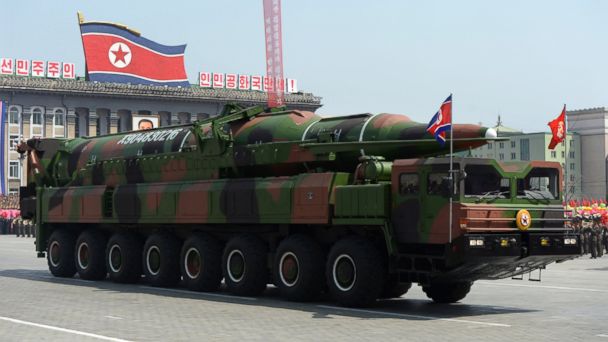
Advertisement
As the United States and North Korea engage in a war of words over the latter’s nuclear and missile development programs, Natural News founder and editor Mike Adams, the Health Ranger, noted in a recent podcast that there were several untruths and myths being perpetuated as related to Pyongyang’s missile tests that most people are unaware of.
“With news breaking now that North Korea has missiles that can strike New York City, Boston, Los Angeles, Denver, Chicago and other major U.S. cities, there are three crucial things that you need to know about North Korea and its nuclear missile capabilities that aren’t being really talked about in the mainstream media,” he said in his “Health Ranger Report” broadcast Thursday.
The first issue, Adams said, is that it’s being widely claimed that most of the missiles fired by Pyongyang’s strategic rocket forces “are failing” — that they are not able to function properly and are falling into the ocean.
While some missiles have failed shortly after launch — which some reports have attributed to U.S. hacking — Adams says the bulk of tests have been successful, and are splashing down in the ocean by design.
The North Koreans “are launching their missiles almost straight up on purpose, and having them fall into the Sea of Japan,” he said. “This is not an accident.” (Related: Pacifist No More: Japan’s Abe Stands Firm With Trump Against North Korea As Tensions Mount.)
The reason, Adams continued, is because the North is testing altitude in order to test distance, so to speak. If the trajectory of those missiles was changed, they would hit targets far away.

“The altitude that has been achieved is about 1,300 kilometers so far, which is huge,” he said. “That means [those missiles] are high enough, given the velocity and altitude — it means that those missiles, once they’re redirected, they can hit almost, maybe, half of the cities in the United States.”
“All of these missiles have guidance systems,” and they’re being ‘instructed’ to launch vertically, he said. Pyongyang “has the ability to strike U.S. cities right now.”
Secondly, he says, Americans are being told that U.S. missile defenses are adequate to knock down North Korean missiles in flight. Patriot missile defenses such as those used in the first Gulf War had a very low success rate, Adams noted, and while today’s systems are probably better, that’s not clear since many details about missile defense testing are classified.
The U.S. has said recent tests of THAAD — Terminal High Altitude Area Defense — have been successful, and that these systems are currently being deployed in South Korea. Also, the U.S. Aegis systems aboard U.S. Navy warships are touted as highly effective in performing the missile defense role.
But these systems have yet to be tested under actual combat conditions, Adams contends, and when they are, they may fail very often as did the first Patriot missile defense batteries.
“Let’s say we have these highly effective missile defense batteries on the ground,” he said. “Can they reach an altitude of 1,300 kilometers? I don’t think so. And if they hit the incoming ICBM, what’s the result? They spread highly radioactive nuclear fuel all over the ground.”
So while the missile defense battery may, in fact, destroy the incoming ICBM, to do so would mean cities in the area would still suffer nuclear fallout.
“Now, all of a sudden, you have almost a dirty bomb effect,” said Adams. That means affected cities would have to be evacuated anyway, even though they were not devastated by a nuclear blast — just a different kind of devastation.
“That alone would be a devastating economic impact,” Adams said. “Kim Jong-un doesn’t even have to detonate a nuke” over an American city — “he still wins.”
Find out what Adams says the third myth is by clicking on the podcast below:
J.D. Heyes is a senior writer for NaturalNews.com and NewsTarget.com, as well as editor of The National Sentinel.
Sources include:
Submit a correction >>
This article may contain statements that reflect the opinion of the author
Advertisement
Advertisements















